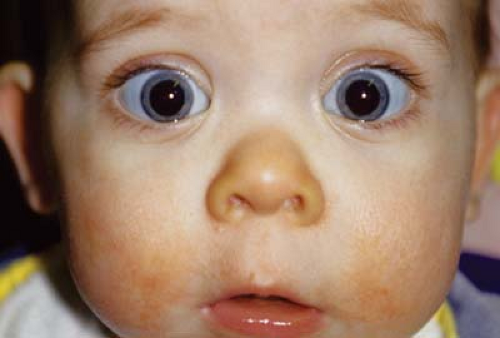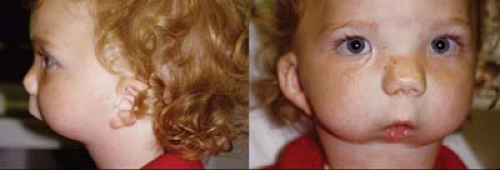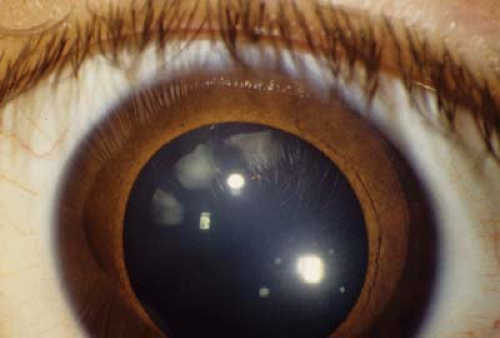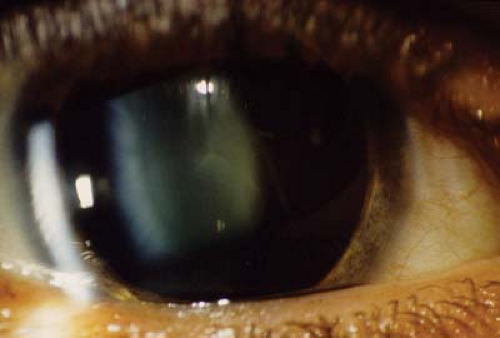Skeletal
Alex V. Levin
Thomas W. Wilson
Skeletal and connective tissue disorders will often have significant ocular manifestations. The connective tissue disorders are often the result of defects within tissue collagen. The abnormal collagen leads to structural weaknesses of the cornea, sclera, lens zonules, and Bruch membrane. These defects also cause systemic disorders of the skin, musculoskeletal system, heart, and vascular system. Collagen abnormalities of the cornea result in keratoconus and keratoglobus (Chapter 5: Cornea, Figures 5.18 through 5.20). Structural defects within the sclera lead to globe elongation resulting in high myopia, retinal detachment, and susceptibility to ruptured globe following minor trauma. Weakness of the Bruch membrane (the basement membrane of the retinal pigment epithelium) results in angioid streaks and subsequent vision-threatening subretinal neovascular membrane. Ectopia lentis is secondary to abnormal lens zonules. Vitreous collagen abnormality may lead to retinal detachment.
Similar defects in collagen may affect the heart valves and vascular tissues. Patients may present with an ocular problem and have a life-threatening systemic abnormality. One example would include a patient with Marfan syndrome presenting with symptoms of ectopia lentis and aortic root dilation detected before aneurysmal rupturing. A patient presenting with acute changes in vision secondary to angioid streaks and subretinal neovascular membrane may have the potential for severe uterine or gastrointestinal bleeding. Ocular abnormalities may be the key factor in the identification of a skeletal system disorder that also has other associated serious systemic abnormalities.
 Figure 28.5 Stickler Syndrome— Perivascular Lattice The retina of Stickler syndrome is atrophic and is typical of high myopia. The refractive error is typically 8 to 12 diopters and nonprogressive. Ametropic amblyopia can occur if not detected at an early age. Perivascular lattice degeneration, shown here, in the peripheral retina and breaks within the retina are common. Children should be monitored on a regular basis with a peripheral retinal examination because of the high risk of retinal detachment. Stickler syndrome is the most common systemic disorder associated with giant retinal tears in children.
Stay updated, free articles. Join our Telegram channel
Full access? Get Clinical Tree
 Get Clinical Tree app for offline access
Get Clinical Tree app for offline access

|



